G3 – Strong geomagnetic storm predicted for March 25; 19 M-class flares in 25 hours
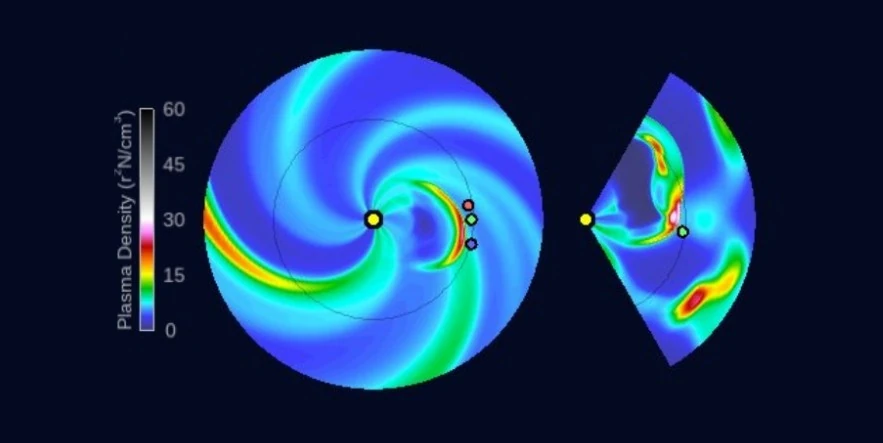
Coronal mass ejection (CME) produced by the X1.1 solar flare at 01:33 UTC on March 23, 2024, is expected to impact Earth late March 24 or early March 25, producing G2 – Moderate to G3 – Strong geomagnetic storming.
Associated with the event was 240 sfu Tenflare, a Type II radio sweep with an estimated velocity of 791 km/s, and a halo CME which was first observed in SOHO/LASCO C2 imagery at 01:25 UTC.
The CME signature contained plasma from multiple sites on the Sun, but the primary bulk of ejecta was oriented northward. Analysis and modeling of the event suggest the arrival of the Earth-directed portion from late on March 24 to March 25, according to SWPC forecasters.
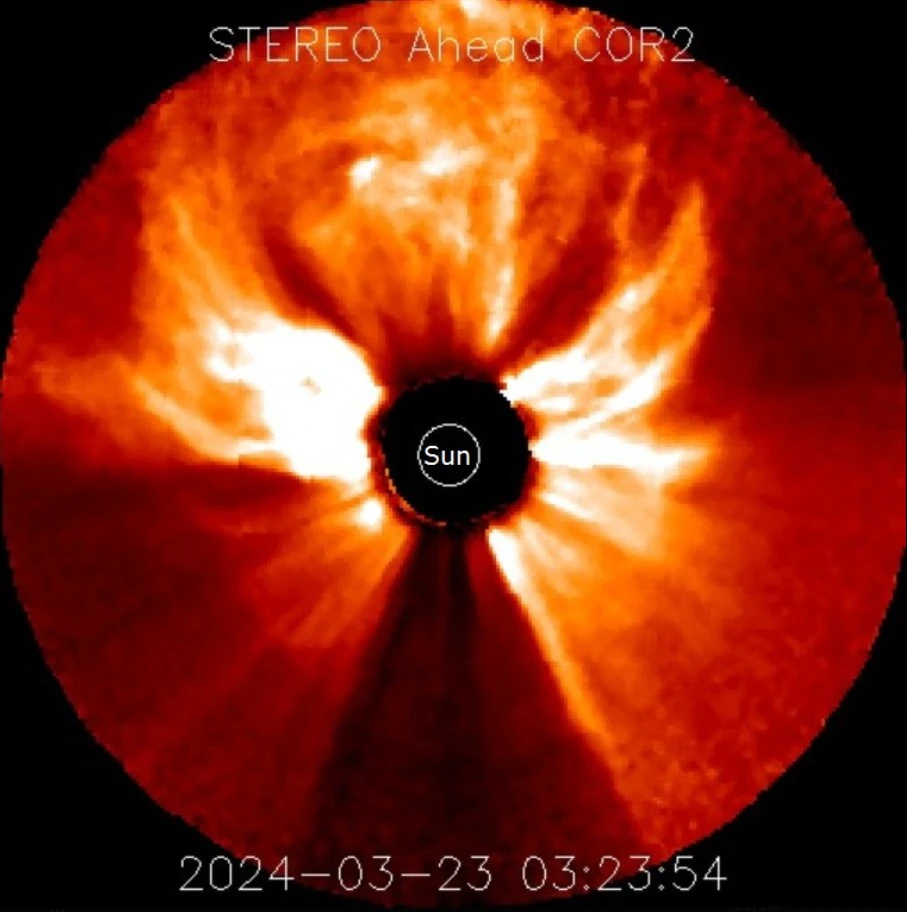

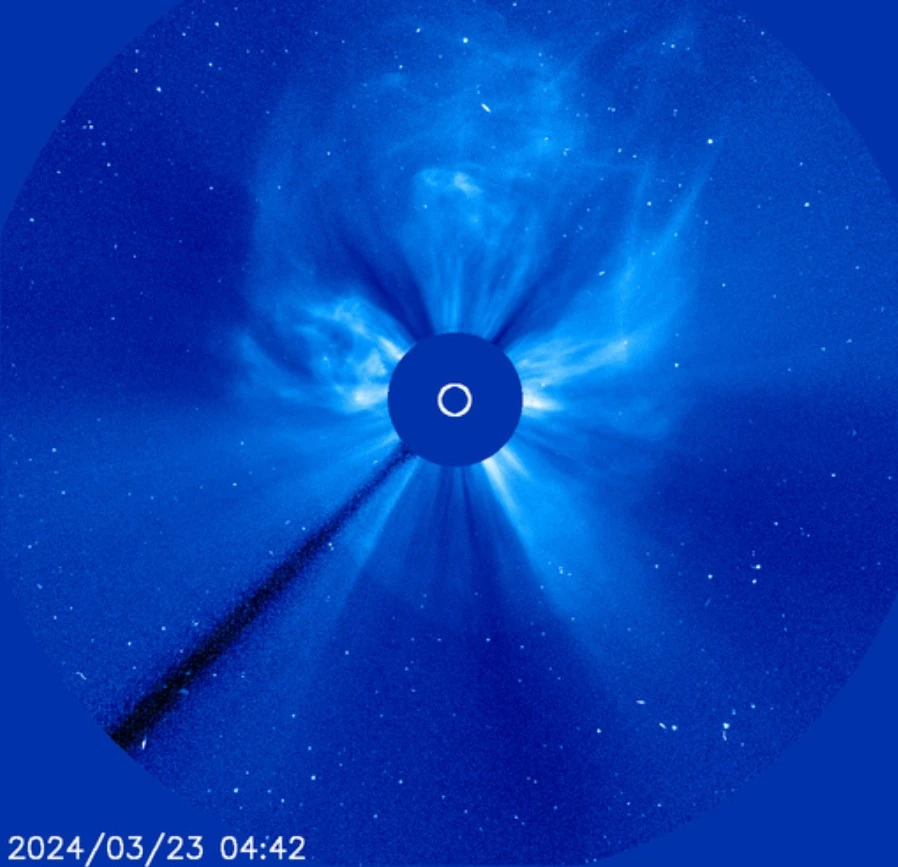

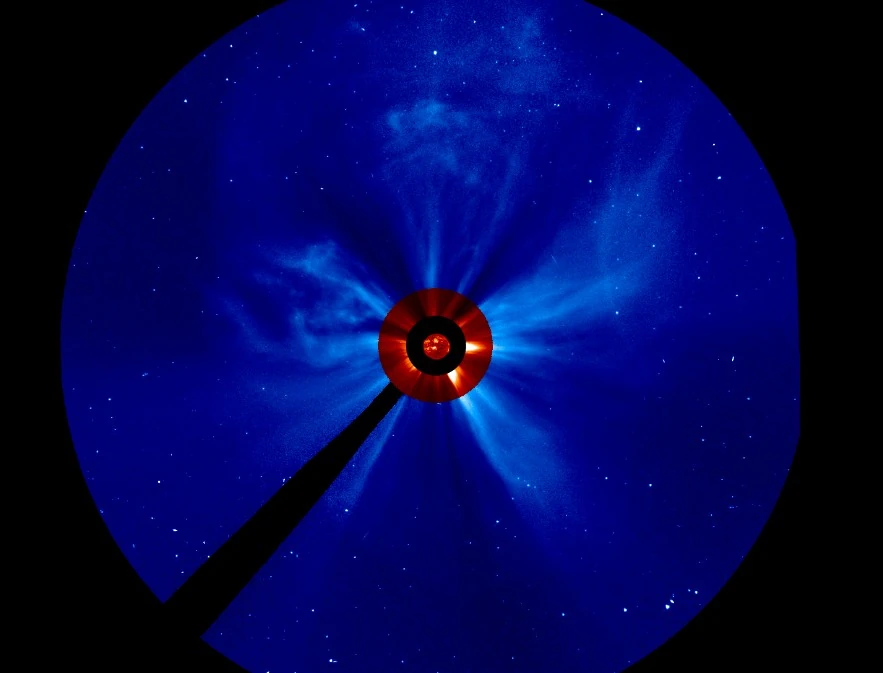

Since the X1.1 flare, our star has produced 19 M-class flares up until 07:51 UTC on March 24, all within a span of 25 hours. However, it was only the X1.1 flare that resulted in a CME directed toward Earth.
| # | Classification | Date and Time (UTC) |
|---|---|---|
| 1 | X1.1 | 03/23, 01:33 UTC |
| 2 | M1.1 | 03/23, 06:55 UTC |
| 3 | M2.4 | 03/23, 07:09 UTC |
| 4 | M3.1 | 03/23, 07:38 UTC |
| 5 | M1.0 | 03/23, 11:29 UTC |
| 6 | M1.3 | 03/23, 12:47 UTC |
| 7 | M1.1 | 03/23, 13:11 UTC |
| 8 | M1.9 | 03/23, 13:37 UTC |
| 9 | M5.2 | 03/23, 13:52 UTC |
| 10 | M1.5 | 03/23, 14:53 UTC |
| 11 | M3.8 | 03/23, 15:13 UTC |
| 12 | M3.7 | 03/23, 15:22 UTC |
| 13 | M2.8 | 03/23, 16:51 UTC |
| 14 | M2.4 | 03/23, 23:49 UTC |
| 15 | M1.4 | 03/24, 01:25 UTC |
| 16 | M2.1 | 03/24, 01:54 UTC |
| 17 | M2.3 | 03/24, 02:05 UTC |
| 18 | M2.7 | 03/24, 02:18 UTC |
| 19 | M2.2 | 03/24, 06:06 UTC |
| 20 | M1.3 | 03/24, 07:51 UTC |
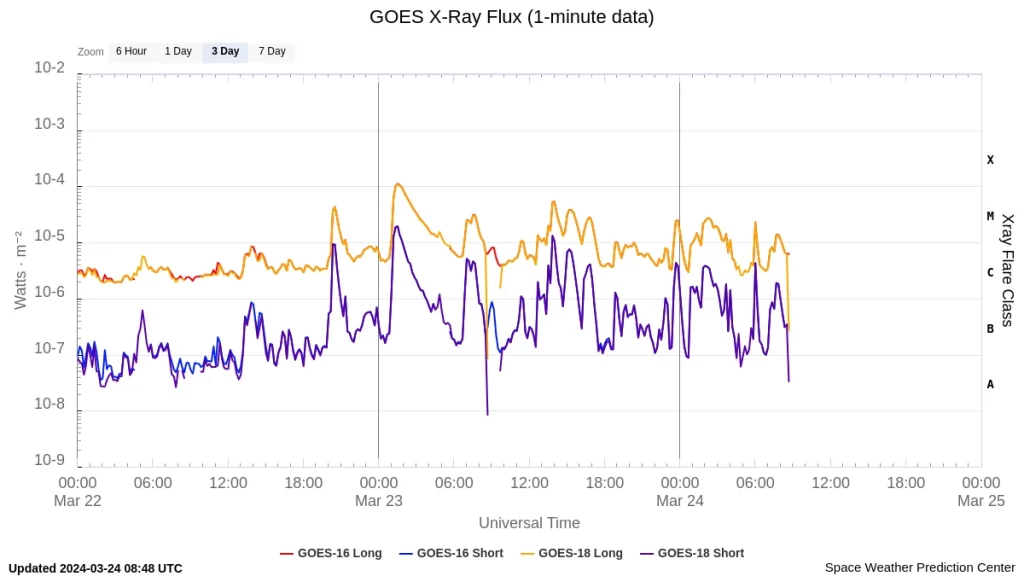

Solar activity is expected to continue at moderate levels with a chance for X-class flares through March 26, due primarily to the flare potential of Regions 3614 (beta) and 3615 (beta-gamma-delta).
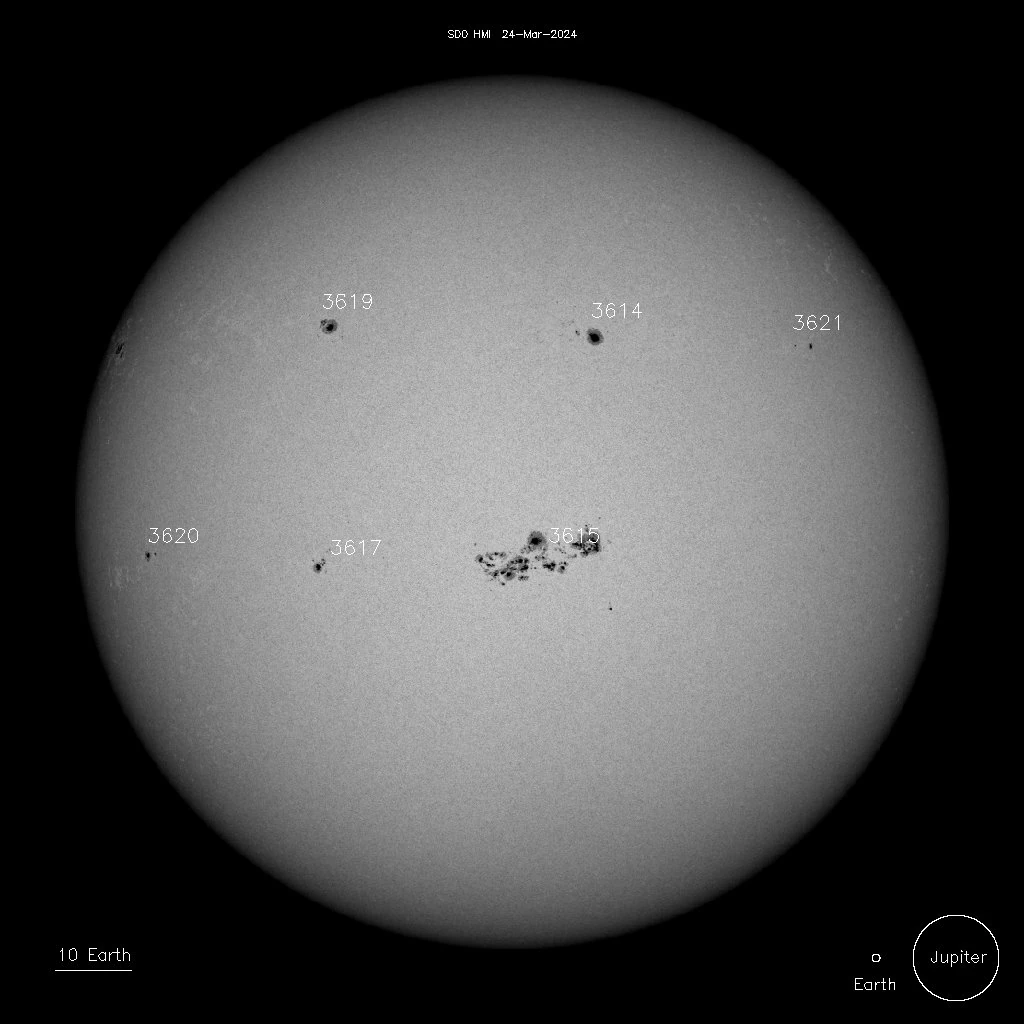

3614 – Beta
3615 – Beta-Gamma-Delta
3617 – Beta
3618 – Beta
3619 – Beta
3620 – Alpha
3621 – Beta
The greater than 10 MeV protons began to increase after 04:00 UTC on March 23 following the X1.1 flare. The S1 – Minor solar radiation storm threshold was reached at 08:15 UTC on March 24 and the current peak was 956 pfu (S2 – Moderate) at 18:20 UTC. The greater than 2 MeV electron flux was at normal to moderate levels.
The greater than 10 MeV proton flux is likely to remain above S1 – Minor levels through March 25.
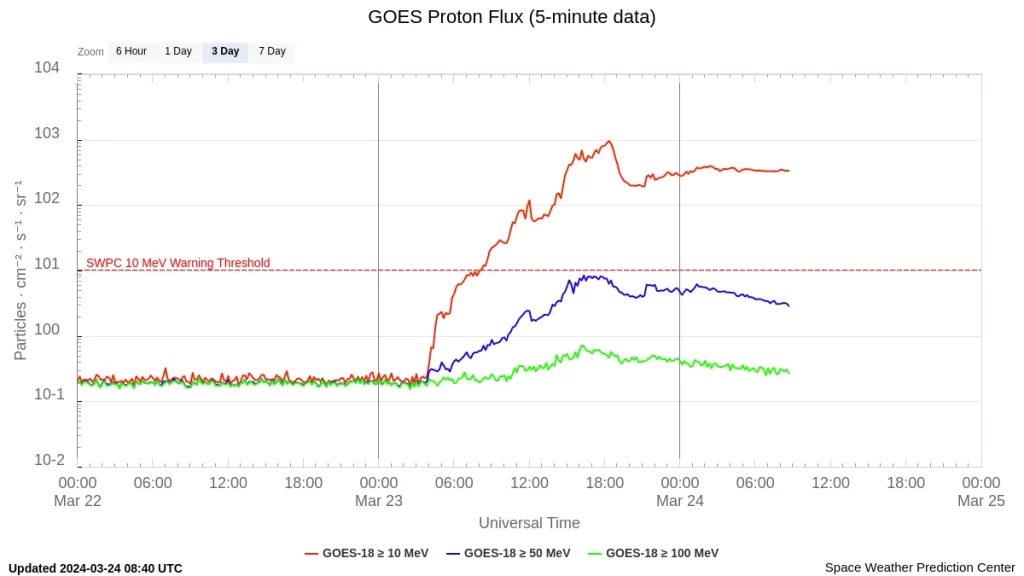

Solar wind parameters were enhanced in 24 hours to 00:30 UTC on March 24, likely due to transient activity and a possible transition to co-rotating interaction region (CIR) influence during the latter part of the day. Solar wind speed increased from lows near 330 km/s midday to approximately 470 km/s by the end of the period. Total magnetic field strength ranged from 3-17 nT. The Bz component was southward through most of the day and reached as far south as -14 nT around 18:00 UTC. Phi angle was mostly negative after 03:00 UTC on March 23.
Solar wind parameters are expected to contain enhancements from a negative polarity coronal hole high speed stream (CH HSS) early on March 24.
From late March 24 into March 25, we expect the effects of a CME produced by the X1.1 flare on March 23 to begin impacting us. These conditions are likely to persist into March 26.
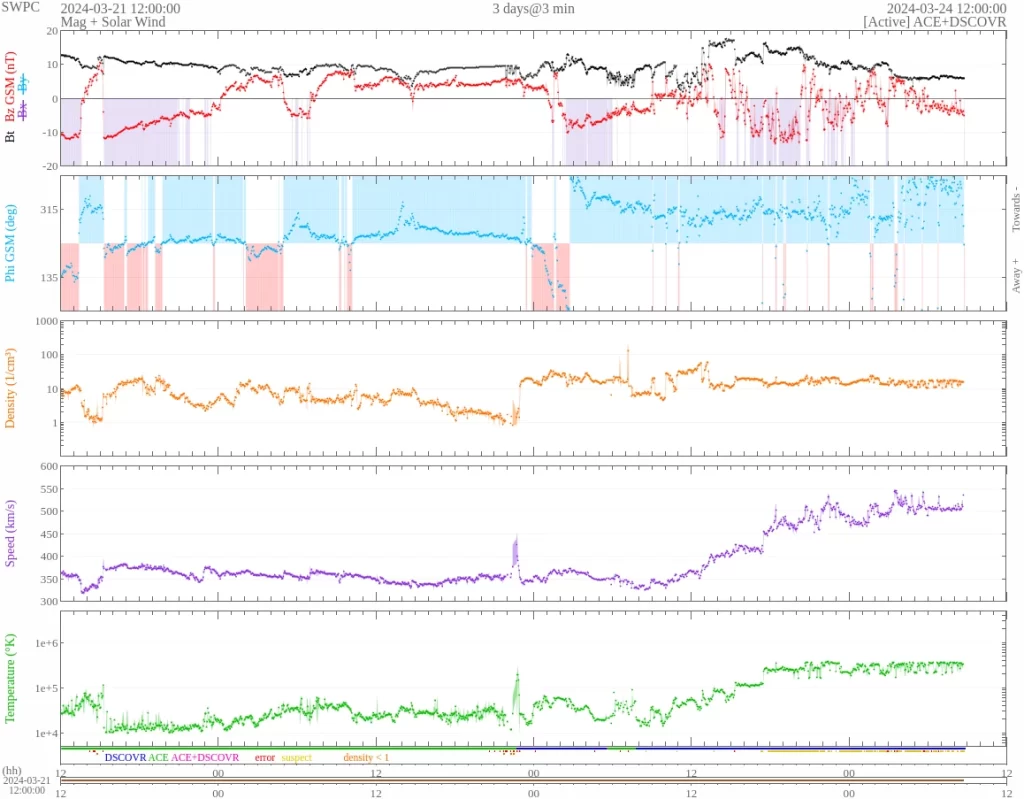

The geomagnetic field reached G2 – Moderate geomagnetic storm levels during the same period due to a transient feature in the solar wind and likely negative polarity CH HSS effects.
G1 – Minor to G2 – Moderate geomagnetic storm levels are forecast for early March 24 due to coronal hole and transient effects, followed by an increase to G3 – Strong on March 25.
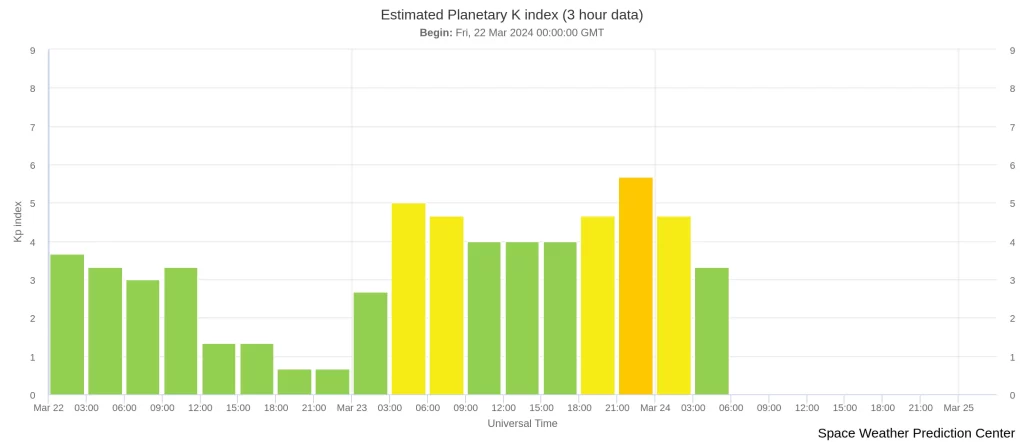

The potential impacts of a G3 – Strong geomagnetic storm, primarily affecting regions above 50 degrees geomagnetic latitude, closer to the poles, include:
- Induced currents: Power systems may experience voltage irregularities, and some protective devices could trigger false alarms.
- Spacecraft: There’s a risk of surface charging on spacecraft, which can lead to increased drag on satellites in low Earth orbit and issues with maintaining proper orientation.
- Navigation: Satellite navigation systems, including GPS, might face intermittent disruptions, loss of signal lock, and increased errors in positioning.
- Radio: High frequency (HF) radio signals could become intermittent.
- Aurora: The aurora might be visible as far south as Pennsylvania, Iowa, and Oregon, offering a rare glimpse of this phenomenon in these areas.
As solar wind enhancements wane, G1 – Minor conditions are likely for March 26.
Update
16:48 UTC, March 24
The CME impacted Earth at 15:00 UTC.
G3 – Strong geomagnetic storm threshold was reached at 15:46 UTC and the storm further increased to G4 – Severe at 16:28 UTC.
G4 potential impacts: Area of impact primarily poleward of 45 degrees Geomagnetic Latitude.
- Induced currents – Possible widespread voltage control problems and some protective systems may mistakenly trip out key assets from the power grid. Induced pipeline currents intensify.
- Spacecraft – Systems may experience surface charging; increased drag on low earth orbit satellites, and tracking and orientation problems may occur.
- Navigation – Satellite navigation (GPS) degraded or inoperable for hours.
- Radio – HF (high frequency) radio propagation sporadic or blacked out.
- Aurora – Aurora may be seen as low as Alabama and northern California.
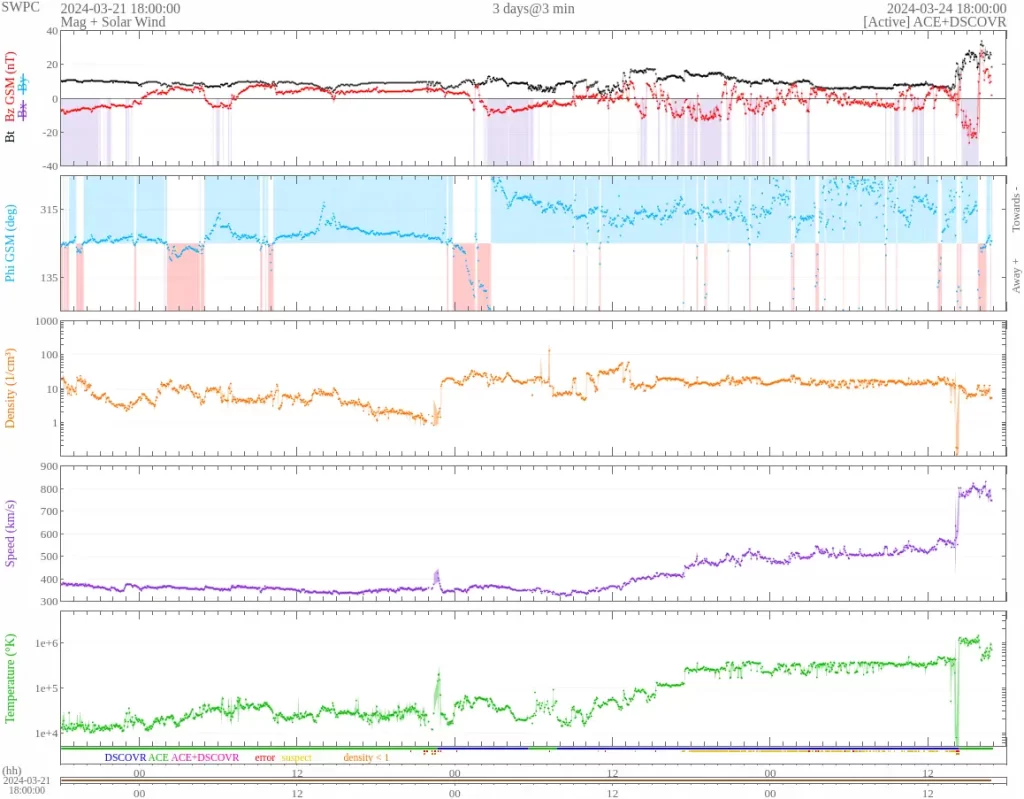

References:
1 Forecast Discussion – Issued: 2024 Mar 24 0030 UTC – Prepared by the U.S. Dept. of Commerce, NOAA, Space Weather Prediction Center
2 Major, long-duration X1.1 solar flare produces Earth-directed CME – The Watchers – March 23, 2024
Featured image credit: NOAA/SWPC, The Watchers


Do you foresee any Solar flashes on April 8th during the Solar Eclipse?
No.
Thank Goddess. The eclipse will be more than enough to experience!